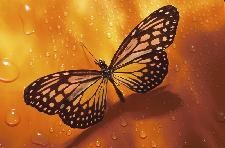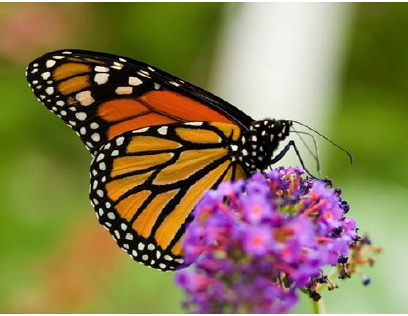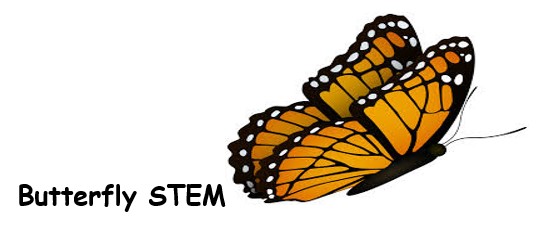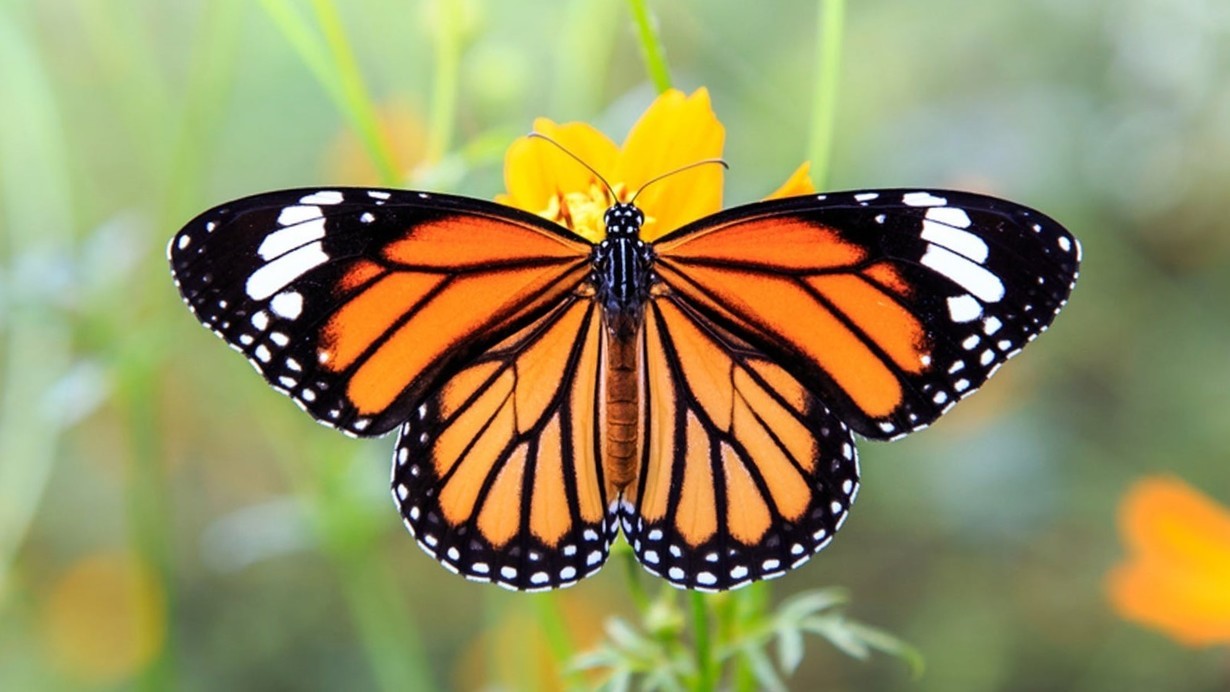Fantastic Folklore: How Butterflies Came to Be
Myths
A myth is another type of traditional story that involves the early history of a culture. They are stories that answer and explain basic questions about the world. Myths are largely rooted in a religion or belief system and a strong reflection of the culture to where the myth originated. A fundamental element in every culture is a creation myth that explains how the wonders of the earth came to be. Some plots are based on something real, like a place, or a group of people that existed historically. However, a myth’s purpose is to explain a natural phenomenon, and often contains supernatural or fantastic beings, gods, and demigods. For example, Greek mythology originated to explain the seasons or weather while illustrating Greek culture and thinking.
Characteristics of Myths
- The author uses strong characterization or character traits are especially important; traits are revealed through appearance, actions, words, and what others think of them
- The characters must cope with aspects of human life: jealousy, love, death, ambition
- The character interact with gods and goddesses, and lesser deities, as well as humans
- Gods and goddesses have human emotions and extraordinary powers
- Many of the themes/lessons and symbols are still important in western culture today
Mythology is a collection of Myths. There are four types of Myths. They are
Animal Mythology, Creation Mythology, Death or Underworld Mythology, and Hero Mythology. You will be able to enjoy all these types of mythology in the weeks to come and complete some fun and engaging activities to go along with each type of mythology.
How Butterflies Came to Be
https://www.firstpeople.us/FP-Html-Legends/HowTheButterfliesCameToBe-Papago.html

A Papago Myth
Now, one day after Earth-Maker shaped the world, Iioi, our Elder Brother was sitting and watching the children play. He saw the joy and the youthfulness they displayed. He saw the beauty of their surroundings, and the fresh fragrance of the trees and the flowers.
He heard the happy songs of the birds, and saw the blue of the sky. He saw the women as they ground cornmeal. He saw their beauty, and the sunlight as it shone from their hair. These were wonderful things.
But then Elder Brother realized that all of these things would change. He knew that these children would all grow old and weaken and die. The beautiful women would someday grow fat and ugly, and their beautiful black hair would turn gray. The leaves would turn brown and fall from the trees, and the beautiful flowers that smelled so fresh would fade. The days would grow short and the nights would be cold. Elder Brother’s heart grew sad and troubled.
As Elder Brother watched the women grind cornmeal, the wind made some fallen yellow leaves dance in the sunlight. He decided to do something which would capture some of these wonderful things which He saw. He decided that He must make something that everyone could enjoy, that would lift their hearts and spirits. So, He took out His bag of Creation and began to gather some things together.
He took some blue from the sky, and some whiteness from the cornmeal. He gathered some spots of sunlight, and the blackness of a beautiful woman’s hair. He took the yellow of the falling leaves, and the green of the pine needles. He gathered the red, the purple, and the orange from the flowers. As He gathered these things, He put them into His bag. And, last, He put the songs of the song birds in the bag.
When He had finished gathering these things together, He called the children together. He told them to open the bag and there would be a surprise for them. So they opened the bag, and out flew hundreds of beautiful Butterflies! They were red and gold and black and yellow, blue and green and white. They looked liked flowers, dancing in the wind. They flew all around the gleeful children, and lit on their heads. The hearts of the children and the adults soared. Never before had they seen such wonderful, happy things. They began to sing their songs as they flew.
But then song bird lit on Iitoi’s shoulder and asked Him. He said, “It is not right to give our songs to these pretty things! You told us when you made us that each bird would have his own song. These pretty things have all of the colors of the rainbow already. Must they take our songs, too?”
Elder Brother said, “You are right. I made one song for each bird, and I must not give them away to any other.” So butterflies were made silent, and they are still silent to this day. But their beauty brightens the day of all People, and brings out songs from their hearts.
And that is how Elder Brother meant it to be.
Genetic Basis of Butterflies
by ReadWorks

If you’ve ever been in a park during the summer, you may have seen butterflies flitting from flower to flower. They are quite beautiful, and like humans, seem to have individual traits. There are orange butterflies with big brown eyes, blue butterflies with black markings on their wings, and white butterflies with small black antennae. According to some butterfly experts, there are approximately 20,000 kinds of butterflies in the world. Each species (or type) of butterfly has its own genetic information that dictates what characteristics it will have and distinguishes it from other butterflies.
Inherited genetic information explains why certain species look different from others. Monarch butterflies, orange butterflies with black markings and white spots on their wings, are most common in Mexico and the United States. Their bright color makes them easily noticeable to predators, but also acts as a warning that they are poisonous if eaten.
The poison of monarch butterflies can be traced back to a plant they feed on during an earlier stage in their lives. What we think of as butterflies are the adult versions of caterpillars. As caterpillars, monarchs feed on milkweed, which contains a toxin that is poisonous to most vertebrates but not to monarch caterpillars. When the caterpillars become adult monarch butterflies, the milkweed in their bodies is poisonous to any predators that might try to eat them.
An unsuspecting predator that did not know the monarch butterfly was poisonous would soon realize its mistake. After tasting the poisonous bug, most predators quickly spit out the monarch and learn not to eat them again. Unlike other butterflies, whose genetic information (and therefore their coloration) helps them blend into their habitats in order to defend themselves from predators, monarch butterflies rely on their bright coloration to keep them safe. An interesting fact: another species of butterfly, the viceroy, mimics the coloration of the monarch in order to keep predators from eating it!
Even though there are many kinds of butterflies that look very different, all butterflies share a certain number of traits, which are also determined by their genetic information. They all have the same life cycle. First a caterpillar hatches from an egg. The caterpillar eats plants and grows bigger. Then it covers itself in a hard case called a chrysalis, and it enters a stage of transformation. During this stage, the insect is called a pupa. Inside the chrysalis, the pupa grows the legs, wings, and other parts of an adult butterfly. Once the butterfly is fully developed, the chrysalis splits apart, and the butterfly emerges. All butterflies have four wings-two upper, two lower-that are covered in tiny colored scales. A butterfly’s genes determine the color of its scales, and more-they dictate the insect’s size and shape as well.
Colorful decorations are key to the survival of the monarch butterfly. Vivid colors signal danger to the predators which might otherwise eat the butterfly. Other species of butterfly, with different genes, rely on different survival strategies, and have their own distinctive designs. But no matter the pattern, the blueprints for each of the 20,000 different species’ development are written in their genetic codes.
Make a Butterfly Garden

Image by Ronny Overhate from Pixabay
Materials
- Raised flower garden
- Shovel
- Plants that butterflies are attracted to(see list below)
- Host plans for caterpillars
Instructions
- Explore Your Yard
You need to look around your yard for a place that gets 6-8 hours of sunlight a day and doesn’t get a lot of wind. There should be some bushes around the Butterfly Garden for butterflies to use for shelter and be able to attach in the chrysalis form.
- Shop for Plants
Go to the local lawn and garden store or nursery and purchase plants that flower. Butterflies are most pronounced between mid to late summer, so choose plants that will flower in Delaware until end of September. Click this link for a list of plants that are indigenous to Delaware and attract butterflies: https://www.onlyinyourstate.com/delaware/pollinator-garden-plants-de/
- Plant your garden.
Plant the items that you purchased, remembering to plant near a bush or two. Add a couple of flat rocks so that the butterflies have a place to lay in the warm sun. Provide a container of water, so they can drink. Don’t use any pesticides or herbicides which may harm the butterflies.

Have you ever seen butterflies fluttering around outside, gliding through the air and landing on flowers? While they are delicate and fragile, butterflies are actually excellent flyers. They are so good, in fact, that scientists at Harvard University studied butterfly wing shapes as an inspiration for building a miniature-flying robot. In this science project, you will do your own version of the Harvard scientists’ experiment to measure the flight performance of butterfly wings.
Design Challenge: Investigate how changing the angle of a butterfly’s wing, relative to the wind, changes the lift force of the wing.
Think About It
The study of how air moves around wings and other objects is called aerodynamics. Harvard scientists measured the lift and drag exerted on butterfly wings. Lift is the force that pushes up on the wings of a flying object whether it is a butterfly, a bird, or an airplane.
- What are the four forces that act on a flying object? Which ones cancel each other out?
- What do scientists use wind tunnels for?
- How do you think changing angle of attack changes lift and drag?
- Have you ever held your hand out the window of a moving car, or in front of a strong fan? How does rotating your hand affect the lift force that you feel? pretend your hand is a wing
- What angle of attack do you think real butterflies use when they glide during flight?
Click the link below to do a simulated experiment as the Harvard professors did to experiment with lift and drag by using a simulated butterfly.
The Butterfly
By Pavel Friedman 1942
During World War ll, over 12 million people died in Nazi concentration camps in Europe. Approximately half of this number were Jewish. Prisoners in the concentration camps suffered greatly. Large numbers of those who were not killed outright by the Nazi’s died from starvation, disease, and overwork. Many of the victims were young children, In Terezin, Czechoslovakia, some of these children recorded their feeling and thoughts in poems and drawings before their deaths. “The Butterfly” was written by a young boy named Pavel Friedman. What does the butterfly represent to him?

The last, the very last,
So richly, brightly, dazzlingly, yellow.
Perhaps if the sun’s tears would sing
against a white stone…
Such, such a yellow
Is carried lightly ‘way up high.
It went away I’m sure because it wished to
kiss the world goodbye.
For seven years I’ve lived in here.
Penned up inside this ghetto
But I have found my people here.
The dandelions call to me
And the white chestnut candles in the court.
Only I never saw another butterfly
That butterfly saw the last one.
Butterflies don’t live in here,
In the ghetto.
Only 100 of the 15,000 children Terezin survived the war. The writings and drawings of Terezin children have been published in a book called I Never Saw Another Butterfly, which takes it title from Pavel Friedman’ poem.
Balancing Butterfly
Although this butterfly will seem to magically float, it’s not magic at all. It’s based on science. All you have to do is follow these simple steps.
Materials
- Paper
- Thin cardboard
- Scissors
- Paint
- Two pennies
- Tape or glue
- Pencil (very sharp point)
- Clay
Directions
- The butterfly has to be exactly the same on each side (symmetrical). Draw one half of your butterfly on a piece of paper.
- Fold the paper and then cut out your butterfly shape
- Unfold the butterfly and place it on your cardboard. Trace the butterfly shape.
- Cut out the cardboard butterfly.
- Paint your butterfly.
- When the paint is dry, tape or glue the two pennies on either side of the head of the butterfly under the front wings
- Stick the pencil point into a lump of clay.
- Carefully place the front of the butterfly on the pencil eraser and move it around gently until you find the point where if balances.
How does it work? The pennies changed the butterfly’s center of gravity. That’s the center of gravity. That’s the center of the butterfly’s mass or weight, which is different than the center of the butterfly’s area. The pencil is directly under the center of gravity.

